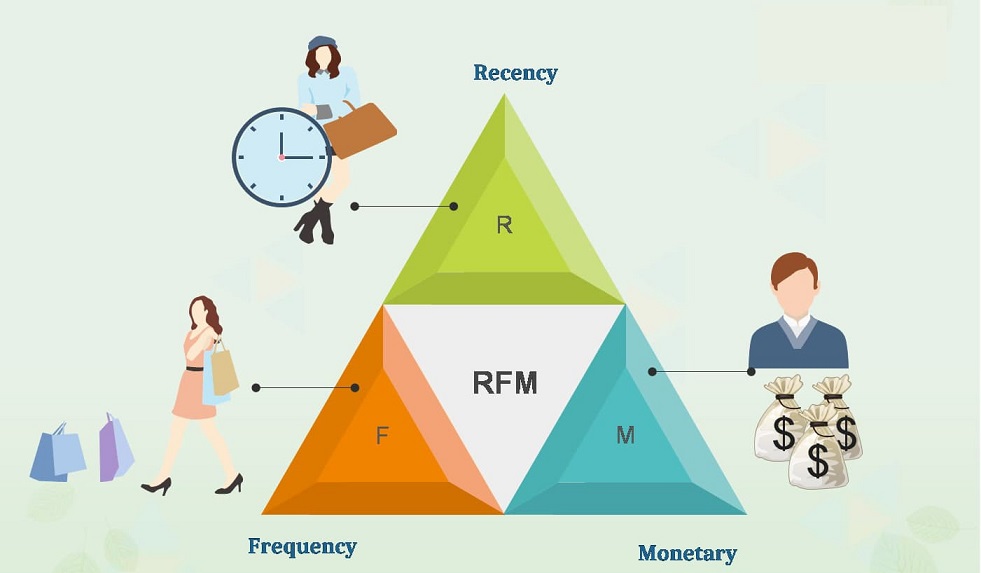В современном цифровом мире владение собственным веб-сайтом стало неотъемлемой частью успешного бизнеса или персонального присутствия в онлайн-среде. Однако создание качественного сайта — только первый шаг. Чтобы он действительно приносил пользу и приносил посетителей, необходимо активно работать над его раскруткой. В этой статье мы рассмотрим ключевые шаги и стратегии, которые позволят вам раскрутить ваш сайт самостоятельно.
First of all, one of the main methods of website promotion is optimization of content for search engines (SEO). This includes the use of keywords and phrases in page texts, proper content structuring, optimization of headings and meta tags. For example, if you own a website dedicated to a healthy lifestyle, it is important to include keywords related to fitness, healthy eating, and psychological well-being in the texts.
Another important aspect is creating quality and unique content that will be interesting to your target audience. For example, if your site is about travel, you can create informative articles about popular destinations, cultural features of countries, travel planning tips, and much more. Quality content attracts visitors, keeps them on the site, and helps it grow in search results.
Optimizing the technical aspects of a website is also important for its promotion. This includes improving page loading speed, creating convenient navigation, adapting to mobile devices, and other aspects that ensure the convenience of using the site for visitors.
Being active on social media is another effective way to attract an audience to your site. Publishing content, discussing relevant topics, and participating in communities will help expand your audience and improve its engagement.
Thus, successful website promotion requires a comprehensive approach and constant work on its improvement and promotion. Following these strategies will help you achieve the desired results and make your website popular and successful in the online environment.
Content Optimization

Content optimization plays a crucial role in attracting visitors to your website and keeping them engaged. Here are some additional tips on how to make your content even more engaging and effective:
Creating unique content: Avoid copying content from other sites. Unique content that cannot be found elsewhere attracts the attention of search engines and users.
Use of various content formats: Include not only text in your content, but also images, videos, infographics, audio files, and other formats. Diversity will help make your site more interesting and accessible to different types of audiences.
Regular content updates: Constantly add new content to your site and update existing content. This will help keep users interested and show search engines that your site is active and relevant.
Focus on quality, not quantity: It is better to have a few quality and informative articles than many superficial ones. Users appreciate deep analysis and useful information.
Example: If your site is about healthy living, you can create a variety of content: articles on nutrition, exercise, mental well-being, recipes, etc. Each article should be original and contain keywords related to the topic of your site.
Оптимизация контента — это длительный процесс, который требует тщательного планирования и регулярного обновления. Однако, правильно выполненная оптимизация контента может значительно повысить видимость вашего сайта в поисковых системах и привлечь больше целевой аудитории.
Creating quality content
Creating quality content is a key element of a successful content marketing strategy. Here are some additional tips on how to create content that is engaging and valuable to your audience:
Analysis of audience interests: Conduct research on your target audience to understand their needs, interests, and problems. Based on this data, create content that will solve their problems or offer them useful information.
Variety of content formats: разнообразие форматов контента позволяет привлекать различные типы аудитории. Например, некоторые предпочитают читать статьи, другие — смотреть видео или слушать подкасты. Используйте различные форматы контента для максимального охвата аудитории.
Originality and uniqueness: aim to create content that is different from others and offers your reader something new and interesting. Avoid copying content from other sources and strive for an original approach to topics and ideas.
Visual appeal: Use attractive and informative images, graphics, and design to make your content more appealing and easy to read. Well-designed content usually attracts more attention and generates more interest from the audience.
Example: If your site is about travel, in addition to articles, you can create interesting photo galleries, video tours, lists of useful tips, or even interactive maps with places to visit. This will make your content more attractive and diverse for your audience.
High-quality and unique content not only keeps visitors on your site, but also helps it spread across social networks, increasing its visibility and attractiveness to new users.
Optimization of technical aspects
It is also important not to forget about the technical optimization of your site. Make sure that your site loads quickly, is easy to navigate, and is adapted for mobile devices. Technical errors and malfunctions can negatively affect the user experience and the level of trust in your site.
Одним из ключевых аспектов технической оптимизации является скорость загрузки страниц. Быстрая загрузка страниц обеспечивает позитивный пользовательский опыт и снижает отказы с сайта. Например, сжатие изображений, минимизация CSS и JavaScript файлов, а также использование кэширования — это некоторые из методов, которые помогают ускорить загрузку страниц.
Удобная навигация — еще один важный аспект технической оптимизации. Посетители вашего сайта должны легко находить нужную информацию. Это достигается понятным и интуитивно понятным меню, понятной структурой сайта и хорошей организацией контента. Например, если ваш сайт имеет множество страниц или категорий, вы можете использовать мегаменю или боковую панель навигации для удобства пользователей.
Адаптивный дизайн — еще один важный аспект технической оптимизации. С учетом роста числа пользователей, заходящих на сайты с мобильных устройств, важно, чтобы ваш сайт корректно отображался и был удобен для использования на различных устройствах и разрешениях экранов. Адаптивный дизайн обеспечивает оптимальный пользовательский опыт независимо от типа устройства, с которого пользователь заходит на ваш сайт.
Technical optimization of a website not only provides a better user experience, but also helps improve its position in search engines. Websites with well-optimized technical characteristics have a higher chance of ranking high in search results, which can lead to increased organic traffic and higher conversions.
Active participation in social networks

Active participation in social networks plays a key role in promoting your website and attracting new audiences. Here are some additional tips on how to effectively use social networks to promote your web resource:
Choosing the right platforms: определите, на каких социальных платформах находится ваша целевая аудитория, и сконцентрируйте свои усилия на них. Например, если ваша аудитория — молодежь, то Instagram и TikTok могут быть наиболее эффективными платформами для привлечения внимания.
Regular content publications: Strive for regular publications to keep your audience interested and engaged. These can be links to new articles, interesting facts, tips, reviews or videos.
Interacting with the audience: Be active on social media, respond to comments, ask questions, conduct surveys, and organize contests. This helps establish trust and engage your audience in a dialogue.
Using hashtags and geotags: Hashtags help your content be more visible and discoverable by other users. Use hashtags that are relevant to your topic, but don’t overuse them. Geotags can also be helpful, especially if your business is focused on a specific region or location.
Example: If your site is about travel, your social posts can include colorful photos of interesting places, travel planning tips, stories about personal experiences and adventures. You can use hashtags such as #travel, #vacation, #travelingaroundtheworld and others to expand the reach of your content.
Being active on social media not only helps increase traffic to your site, but also creates a community around your brand, which helps it grow and become more established online.
Networking and link exchange

Networking and link exchange play an important role in promoting your website. Here are some additional tips on how to effectively use this strategy to improve the visibility of your web resource:
Search for relevant resources: Look for sites that are relevant to your topic and have high authority in your industry. These can be blogs, forums, online magazines, and other resources that are important to your audience.
Quality, not quantity: Quality link exchanges with authoritative and relevant sites are much more important than mass link exchanges with low-quality resources. When choosing partners for link exchange, pay attention to their reputation and quality of content.
Natural interaction: Make sure that your link exchanges look natural and organic. Avoid link exchange schemes or link buying, as this can have negative consequences for your site in search engines.
Diversity of sources: Diversity of backlink sources helps your site appear natural in the eyes of search engines. Keep in mind that links from different types of resources, such as blogs, forums, news sites, carry more weight.
Example: If your site is dedicated to cooking, you can look for partners among other cooking blogs, cooking communities on social networks, or online magazines about food and cooking. Exchanging links with such resources will help your site gain an additional audience interested in cooking information.
Overall, networking and link exchange are an important part of a website promotion strategy and can significantly improve your site's ranking in search engines and attract additional traffic. However, do not forget that quality and relevance play a key role in successful link exchange.
In conclusion, successful website promotion requires a systematic approach and constant work on its improvement and promotion. Based on the above strategies, it is also important to consider the following aspects:
Analytics and results tracking: Monitor your site's performance regularly using analytics tools like Google Analytics. This will help you understand which strategies are effective and which ones need adjustments.
Flexibility and adaptation: The Internet environment is constantly changing, so it is important to be flexible and adapt to new trends and changes in user behavior. Regularly review and adjust your strategies in accordance with market conditions.
Content update: Be sure to update the content on your site regularly. This will help keep your audience engaged, improve your SEO, and keep your website relevant. Community Participation: Be an active participant in your niche or industry. Participate in discussions, comment on others' content, and offer your expert opinion. This will help you build your authority and attract new audiences.
For example, if your site is dedicated to online learning, you can regularly host webinars or online courses, as well as actively blog where you discuss current topics and issues in your field.
By following the above strategies, as well as taking into account changes in the industry and audience needs, you can achieve the desired results and make your site popular and successful on the Internet.








